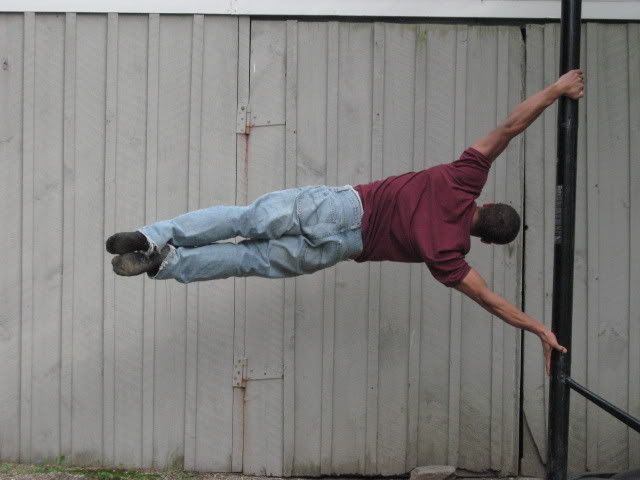I discussed this previously a time ago, but I have a few more words on the matter since it's generally important. A fair amount of movements that people are concerned about mastering from time to time are incredibly taxing on the joints. Since I'm discussing all around fitness in the body calisthenics area, I'm going to offer some important tips on this subject that you must follow carefully to avoid damage.
First off, I'll give you tips on getting used the movement and making your body stronger. To begin, you need to build yourself up to these things, because things like one handed turtle freezes and hammers, flips, whatever it is, are incredibly rough on the joints if you don't know what you're doing or you're not prepared.
For both ankles, knees, and wrists since those tend to be the main pressure spots in fitness, you need to build up to it as usual. But you need to strengthen your ligaments, and build up some dense muscle in the areas that you are going to be using. For concerns of break dancing and parkour and such since those are becoming more popular, you really should build up some forearm muscle before getting into handhops, any kind of turtle power moves or freezes, and airchairs as well.
Your forearm muscle decides how long there won't be cartilage destroying pressure on your joints. The under part of your forearm, and the most meaty part of it, should have very decent strength. Build it up doing pull ups or lifting weights. If you build that muscle up you have more control on the ground and can push out with your hand relieving a fair amount of the pressure on your wrists.
Another thing is, don't workout to pain or pure exhaustion in these movements, you will destroy your body if you do. Sure, weight lifting, calisthenics, all that, it's a good thing to work out until you're fully exhausted and will be nice and sore the next day. But, you should not work to full exhaustion in holding freezes and positions on your hands that are taxing on the wrists. You only need to practice enough to become good, and trust me when I say that tiring yourself to just resting on your joints is way more practice than needed to get good. Rest between sessions and come back with renewed power as well. Three, four minute breaks in these things are very important.
For the knees, and the ankles, well... I can't say too much but that if you want to learn how to flip, sticking things in practice unless you're a gymnast is kind of stupid, and even then it's stupid. The thing about flips is that it's an entirely different kind of momentum compared to that of a regular high jump or run because when you rotate, it's more like you're jumping from an object that's about your height plus half of that because when you flip you go higher with the block and rotation causing more joint stress. Move after your flips. Before you get into flips, build yourself up. Prerequisites are dearly important, learn what comes first, and strengthen your legs. Toughen up your calves, run a mile three times a week, do one foot calf raises, and about one hundred squats in a row for a good leg workout. The strength preparation makes your muscles stronger for learning things such as flips. If you land a flip but your body isn't very strong, the momentum and the power does not go into your muscles as it should, but into your joints which is dangerous and unsafe for your body causing problems later on.
Another tip is safe practice. Don't show off, don't do stupid things, teach yourself first hand, learn what you are going for, study it, and build yourself upwards. The Fitness Cookie himself, (me) has never shown off. Only have I practiced and shown what I know and can do. Build upwards, don't work until exhaustion or pain in the joint taxing movements, and safe practice and performance.
-The Fitness Cookie



